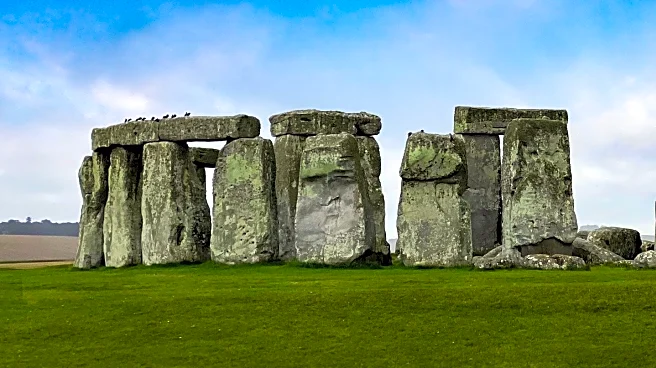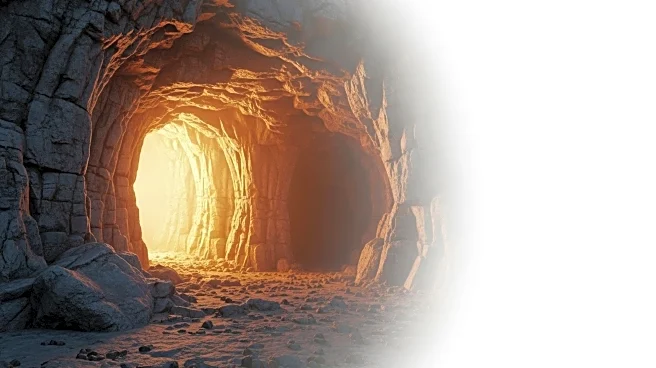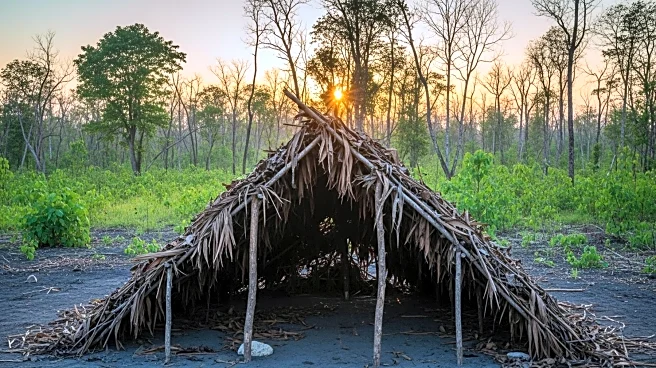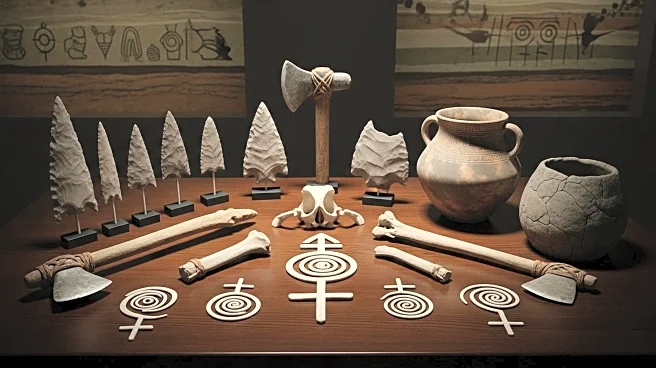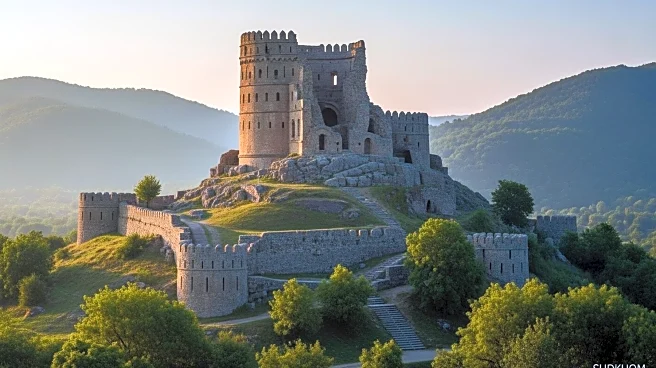What's Happening?
A recent study has re-examined a stone from a 1924 excavation at Stonehenge, providing new insights into the monument's construction. The analysis of the Newall boulder, a hand-sized rock, suggests that humans, rather than glacial activity, transported the smaller bluestones to the site. Researchers matched the rock's mineral composition to Craig Rhos-y-Felin in west Wales, about 125 miles from Stonehenge. The study, led by Richard E. Bevins of Aberystwyth University, found no evidence of glacial wear, supporting the theory of human involvement in moving the stones.
Why It's Important?
This discovery challenges the long-held belief that glaciers transported the bluestones to Stonehenge, instead supporting the idea of human agency in the monument's construction. The findings have significant implications for our understanding of Neolithic engineering and logistics, highlighting the capabilities of ancient communities in transporting large stones over long distances. This research not only reshapes historical narratives about Stonehenge but also contributes to broader discussions about human innovation and cultural practices in prehistoric times.
Beyond the Headlines
The study's implications extend beyond archaeology, touching on themes of human ingenuity and the cultural significance of monumental architecture. By demonstrating the potential for human transport of the stones, the research underscores the importance of intentionality and planning in ancient construction projects. This perspective invites a reevaluation of other prehistoric sites and the methods used in their creation, offering new insights into the social and technological advancements of early societies.
